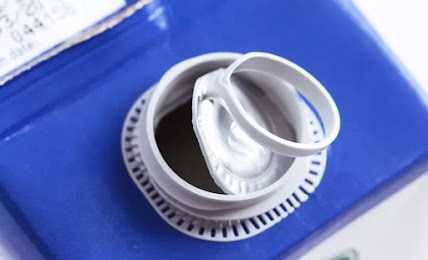The simple act of opening a milk carton can sometimes be surprisingly frustrating. A poorly designed or manufactured pull tab can lead to broken fingernails, spills, and general annoyance. While seemingly trivial, this small detail can significantly impact consumer perception and satisfaction.
The ease of opening a milk carton hinges on the force required to pull the tab. Given the importance of safety, product integrity, and consumer satisfaction, it's highly recommended that manufacturers routinely test the pull force of the ring tabs.
Key parameters measured during testing include:
Labthink C610H Auto Tensile Tester is a versatile instrument designed to measure the tensile, peeling, and tearing forces of films, composite materials, and package pull tabs. It can be configured with a variety of fixtures to accommodate different testing needs.
Testing the pull open force of milk carton ring tabs is a crucial aspect of quality control and product development. By employing appropriate testing methods and considering other relevant factors, manufacturers can ensure that their milk cartons are easy and convenient for consumers to open, leading to greater satisfaction and a positive brand experience.
As the demand for functional packaging materials grows, testing methods are evolving to ensure a more comprehensive evaluation of packaging films. Labthink encourages collaboration with packaging industry companies for quality control! Visit the website www.labthink.com to learn more!
The ease of opening a milk carton hinges on the force required to pull the tab. Given the importance of safety, product integrity, and consumer satisfaction, it's highly recommended that manufacturers routinely test the pull force of the ring tabs.
- Consumer Safety: A tab that's too difficult to open can lead to strained fingers or the use of tools, which can also be dangerous.
- Product Integrity: The pull tab is part of the package’s hermetic seal, crucial for preserving the food inside. Testing ensures the seal remains intact until the intended opening.
- Convenience and Consumer Satisfaction: Consistent and reliable opening mechanisms are essential for customer satisfaction.
Key parameters measured during testing include:
- Initiation Force: The force required to begin the tear in the carton seal.
- Peak Force: The maximum force required to fully open the carton.
- Elongation: The distance the tab stretches before breaking or the seal fully opens.
Labthink C610H Auto Tensile Tester is a versatile instrument designed to measure the tensile, peeling, and tearing forces of films, composite materials, and package pull tabs. It can be configured with a variety of fixtures to accommodate different testing needs.
Testing the pull open force of milk carton ring tabs is a crucial aspect of quality control and product development. By employing appropriate testing methods and considering other relevant factors, manufacturers can ensure that their milk cartons are easy and convenient for consumers to open, leading to greater satisfaction and a positive brand experience.
As the demand for functional packaging materials grows, testing methods are evolving to ensure a more comprehensive evaluation of packaging films. Labthink encourages collaboration with packaging industry companies for quality control! Visit the website www.labthink.com to learn more!

Comments
Post a Comment